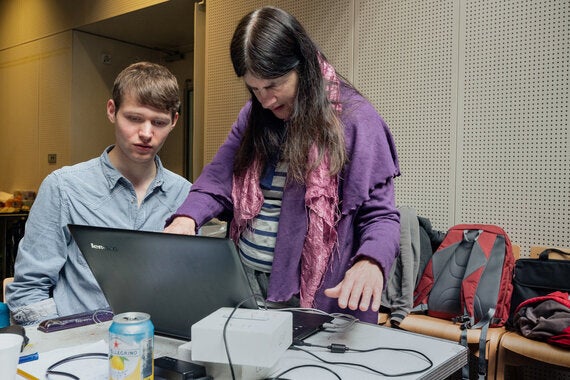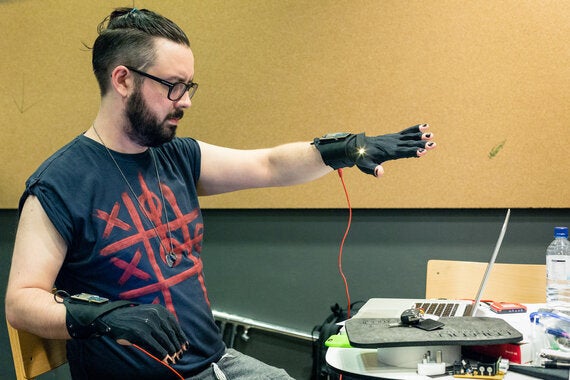
The other weekend I spent time with the Research and Development team at Drake Music, a charity committed to giving all people - disabled and non-disabled alike - the same opportunities to express themselves through music, to affirm that they truly have soul.
Led by Gawain Hewitt, Drake R&D pioneer ways for disabled musicians to get the best out of musical instruments. All instruments require physical inputs from a player - lungs, lips, fingers - which are then translated into sound. Those who live with disabilities sometimes require the nature of these 'inputs' to be modified, and this is where Drake's R&D work begins.
Part of their work is collaborating with performers to develop instruments to their precise specifications. For example, John Kelly - a professional musician - knew that playing a physical instrument was important for live performance. Drake gathered a team of music technologists and came up with the 'Kelly-caster,' a Fender Telecaster that has had the neck and fret-board removed. Digital pickups translate the signal from each string and, using a tablet interface, Kelly can select chords and control effects.
This 'hacking' of instruments is an important part of the R&D agenda for Drake. I was there with them as part of the Southbank Centre's recent Web We Want festival, where Drake were holding an open hack-a-thon, inviting coders, musicians and engineers to come up with an instrument, the simple brief being accessibility. The results were fantastic.
In one corner we had 'Photosynth,' which allows a user to control music using colour and movement. Across the room there was 'Sonic Leap,' a virtual keyboard that uses a Leap Motion sensor-camera to track the position of fingers, and allows for the shape and size of 'keys' to be customised. One of the hackers had brought in four Playstation quiz controllers that he'd found online for £2. Having a USB interface, he was able to connect them to a Raspberry Pi computer and create a robust, collaborative, button-controlled synthesiser for under £30. At the other end of the musical spectrum, a group were working on a high-end multi-channel input-output device that opened up professional-level recording and control to the home market.

In their own way, all of these developments are important, because often the commercial solutions offered to disabled musicians are expensive and don't meet the specific needs that some players have. By taking a hacker's approach to instrument creation, Drake are pushing the boundaries of what music-making can be to a place where disabled and non-disabled musicians alike are collaborating with the same tools.

One example of this are the MiMu gloves that another professional musician, Kris Halpin, has been using. Kris lives with cerebral palsy. Currently able to play guitar and keyboard, he is aware that his dexterity is deteriorating; he is skilling-up now in preparation. Developed by Drake Music ambassador and Ivor Novello winning artist Imogen Heap, the MiMu gloves allow the musician to literally pluck music out of the air. Using sophisticated sensors, the gloves can detect movements of each finger and the position and trajectory of each hand. This allows Kris to custom design a recording or performing environment, controlling studio software using hand movements that he chooses.
Keeping an ear to the ground for new technologies such as these that help those living with disabilities to access music-making is what Drake's R&D department is all about. In one sense it is no different to the workshops in Cremona that worked for centuries to perfect the violin, constantly experimenting with different woods, varnishes and shapes, collaborating with working musicians to get the sound that they wanted.
An R&D hack-a-thon might look like a jumble of circuit boards and wires, mixed up with the back room of a keyboard repair shop, but what I found going on was a profound statement about the equal value of all human beings.
In amongst the smell of solder and the crackle of new code being written was a desire to see everyone have the chance to let their soul sing.
Photos © Emile Holba. Used with permission.